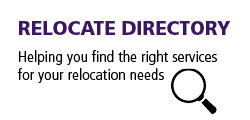Australia prepares to cut back on skilled labour immigration
Australia is preparing itself for large scale changes to its skilled labour immigration, intended to promote greater employment of Australian citizens and less displacement by foreign visa holders.

Protecting jobs for Australian citizens
While President Trump’s immigration reform, dubbed “Buy American, Hire American” requires several agencies, including the Departments of State, Labour, Justice and Homeland Security, to tighten restrictions on H-1B visas, Australia’s Turnbull administration is taking similar steps to protect jobs for citizens there.On April 18th, Peter Dutton, the Minister for Immigration and Border Protection, along with Prime Minister Turnbull, announced the termination of the Subclass 457 Visa for foreign workers, to be replaced by the Temporary Skill Shortage Visa.Full implementation by March 2018
The new visa will consist of two tracks – short-term and medium-term placement, depending on the applicant’s skill level and the country’s areas of critical employment shortages. Turnbull’s goal is for full implementation of the new system by March of 2018.The newly introduced regulations mandate a number of changes, which are intended to promote greater employment of Australian citizens and less displacement by foreign visa holders. Today’s unemployment rate in Australia sits at 5.8 per cent, which is higher than in recent years, with the exception of 2014. According to Turnbull, Bill Shorten, current leader of the Opposition Party, had allowed too many immigrants to enter the country – over 110,000 in 2013 – many of whom claimed low-skilled positions that could have gone to the Australian unemployed.Reduction in eligible occupations
One of the major changes is a sharp reduction in the list of eligible occupations to include only the most skilled jobs – an elimination of some 200 occupations. A sampling of the newly excluded occupations include seemingly high-skill jobs like biotechnologist, geophysicist, and intellectual property lawyer, along with lower-skill jobs, such as actor, tailor and metal polisher.Among other restrictions, the new visa requirements include the following:
For applicants:- Two years of prior work experience
- Criminal background checks
- Higher English language proficiency
- Greater training obligations for Australian citizens
- Harsher scrutiny of salaries offered to foreign workers
- Increases in sponsorship costs by up to 100%
More stringent regulations
As with President Trump, Prime Minister Turnbull of Australia’s Liberal-National coalition, rode to victory in September 2015 with the promise that he would strengthen the country’s borders and crack down on those entering the country illegally and the skilled labour immigration program. Since his April 18th visa reform announcement, Opposition Leader Shorten has called for even more stringent regulations, with the promise to increase employer fees to sponsor foreign workers from $2,400 under Prime Minister Turnbull’s plan to $6,400 per employee. The additional revenue generated would contribute to a new “SkillUP Training Fund” that will help deliver new skills and training for Australian workers.A new SMART Visa
The Labour party would also establish a new SMART Visa, intended to attract world leaders in science, medicine, academia, research and technology, which will help the country stay on the cutting edge of new technologies.While it is too soon to know how the rules affecting skilled labour immigration will affect the Australian economy in the long run, it is clear that the country means business in allocating scarce jobs to protect their own. The Indian Prime Minister, Narendra Modi, whose country leads the charge for skilled labour visas, has reportedly already appealed to Turnbull for greater leniency, with the hope that his country can avoid its own unemployment problem.This news alert was prepared by Envoy Global the global immigration services provider.For related news and features, visit our Immigration section.Access hundreds of global services and suppliers in our Online Directory Get access to our free Global Mobility Toolkit
Get access to our free Global Mobility Toolkit 




































